Apples, oranges and bananas might be standard fare in your fruit bowl, but these everyday fruits only scratch the surface of the world’s bounty of exotic natural goodies. Shopping for exotic and unusual fruits is a great way to experience new flavors from around the globe. Plus, your body will appreciate the burst of nutrients that comes with every serving.
Ready to expand your fruit horizons? Check out these eight weird fruits that are really good for you.
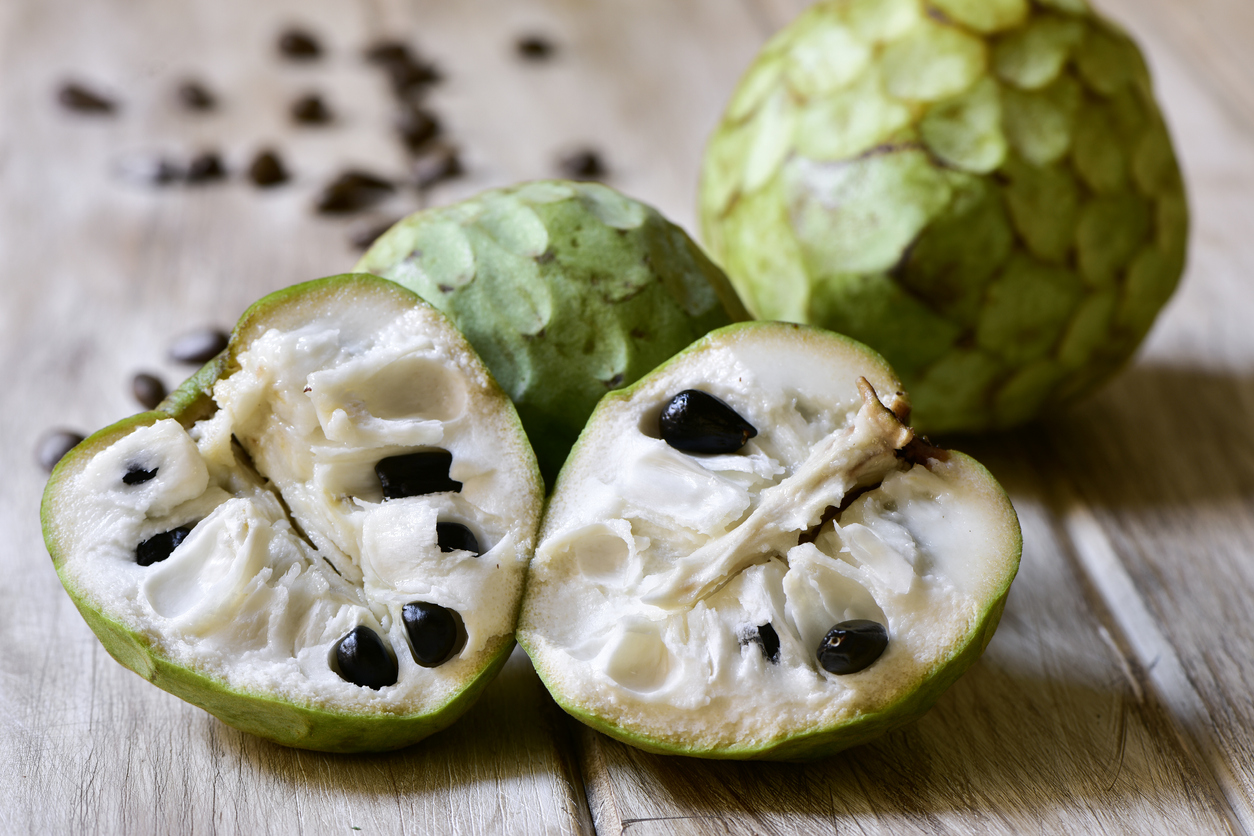
#1) Cherimoya
Sometimes called a custard apple, cherimoya is a green-skinned fruit from South America. The creamy consistency of the flesh is just right for scooping and eating with a spoon. You can also mix pieces into hot cereal or broil slices with a sprinkle of cinnamon.
The skin and seeds can be toxic, though, so stick to the white part of the fruit.
Cherimoya is a good source of vitamin B6, which helps keep your hair and skin healthy and supports the production of hormones that regulate mood and sleep. If you can’t find cherimoya at the store, try avocados for vitamin B6 instead.
Cherimoya also has vitamin C, potassium, magnesium and fiber as well as antioxidants like lutein, catechin and kaurenoic acid.
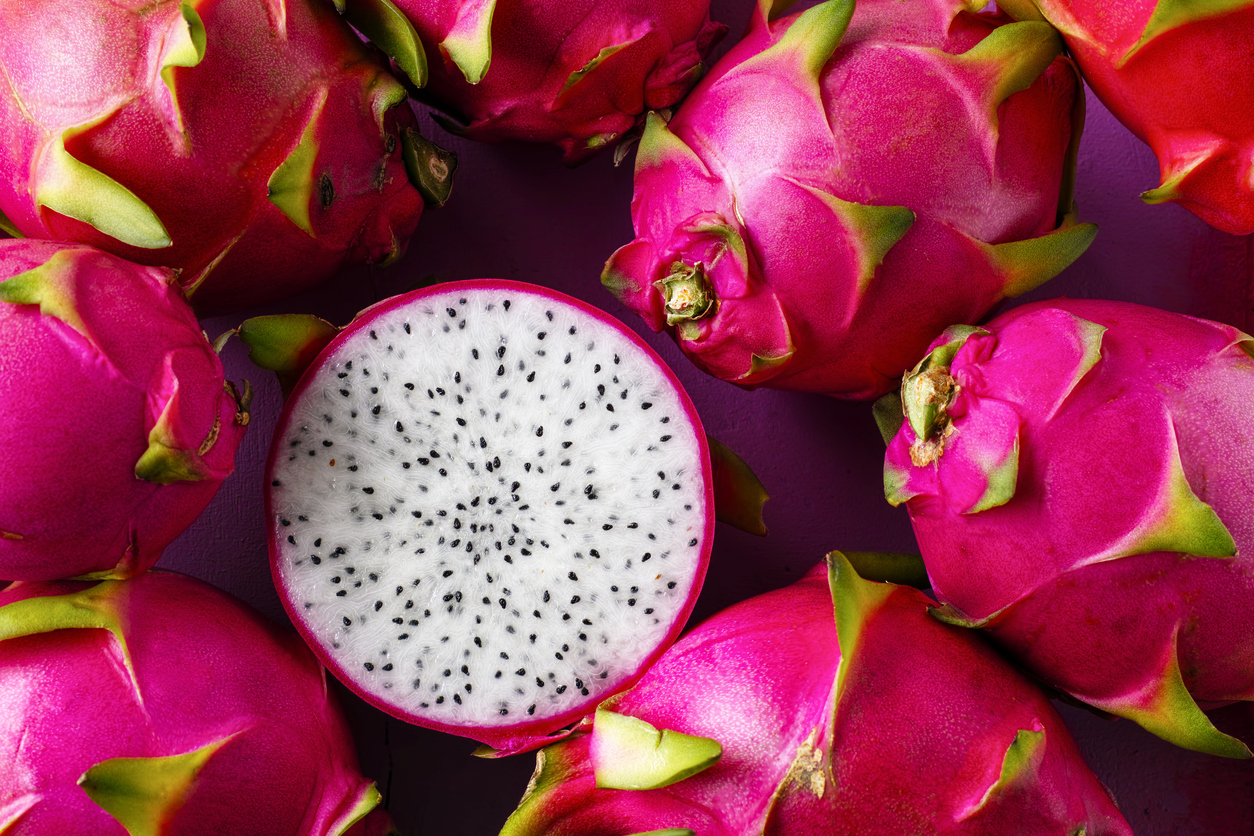
#2) Dragon fruit
The bright, scaly skin of dragon fruit, also called pitaya, is sure to catch your eye on the store shelves. Inside, there’s speckled red or white flesh, which can be eaten raw. Its texture is sometimes compared to that of a kiwi. Many people enjoy dragon fruit fresh or in smoothies, but you can also try grilling it.
Dragon fruit is low in sugar but high in nutrients.
Research suggests that the antioxidants in dragon fruit may help with reducing inflammation, insulin resistance and weight gain. You can also get iron, magnesium, fiber and vitamin C from this fruit.

#3) Durian
If you’re feeling especially brave, give durian a try. This heavy, oval fruit has a strong odor that turns many people off. Despite that, this spiky Asian fruit does have devoted fans.
If you want to try it, you’ll find that overripe durians taste the sweetest. You can eat the custardy flesh raw, but dispose of the seeds and skin.
Eating durian will help you get the thymine, riboflavin, iron and manganese that your body needs. Your cholesterol level may benefit from durian’s high fiber content as well.
Keep in mind, though, that durian does have more fat and calories than a lot of other fruits, so moderation is recommended.
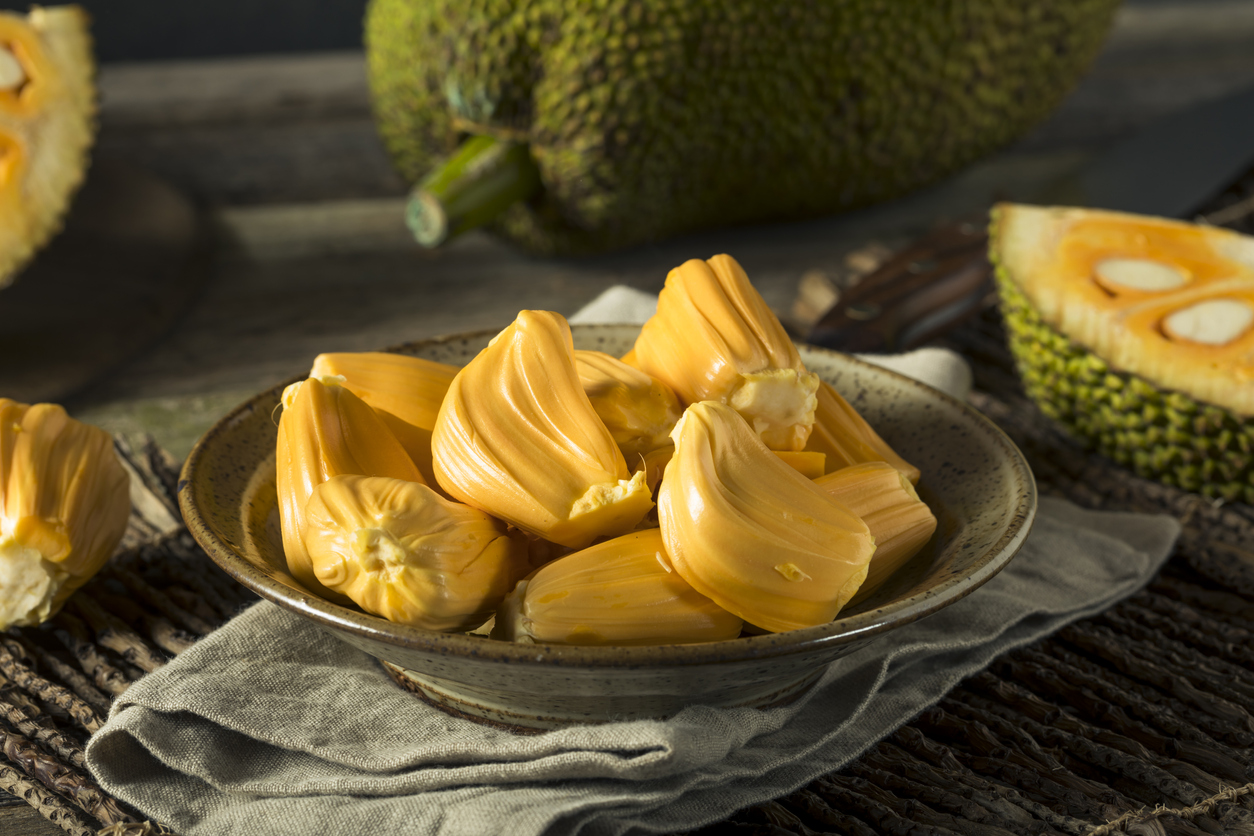
#4) Jackfruit
Surprisingly, jackfruit is most popular for its ability to replicate some favorite meat dishes. Unripe jackfruit’s fibrous flesh takes on the flavors of the sauces it’s cooked in, so it’s often used as a plant-based alternative to pulled pork in barbecue sauce.
Once ripened, though, jackfruit is sweeter and can be eaten on its own.
The nutrients you’ll get from a serving of jackfruit include vitamin A, vitamin C, magnesium, potassium and manganese. Note that it doesn’t contain as much protein as the meat you may be substituting it for.
Finding this fruit fresh in your store may be a challenge, but some companies offer young jackfruit in packaged form, which might be easier to track down. Look for it in cans or refrigerated (or frozen) pouches.
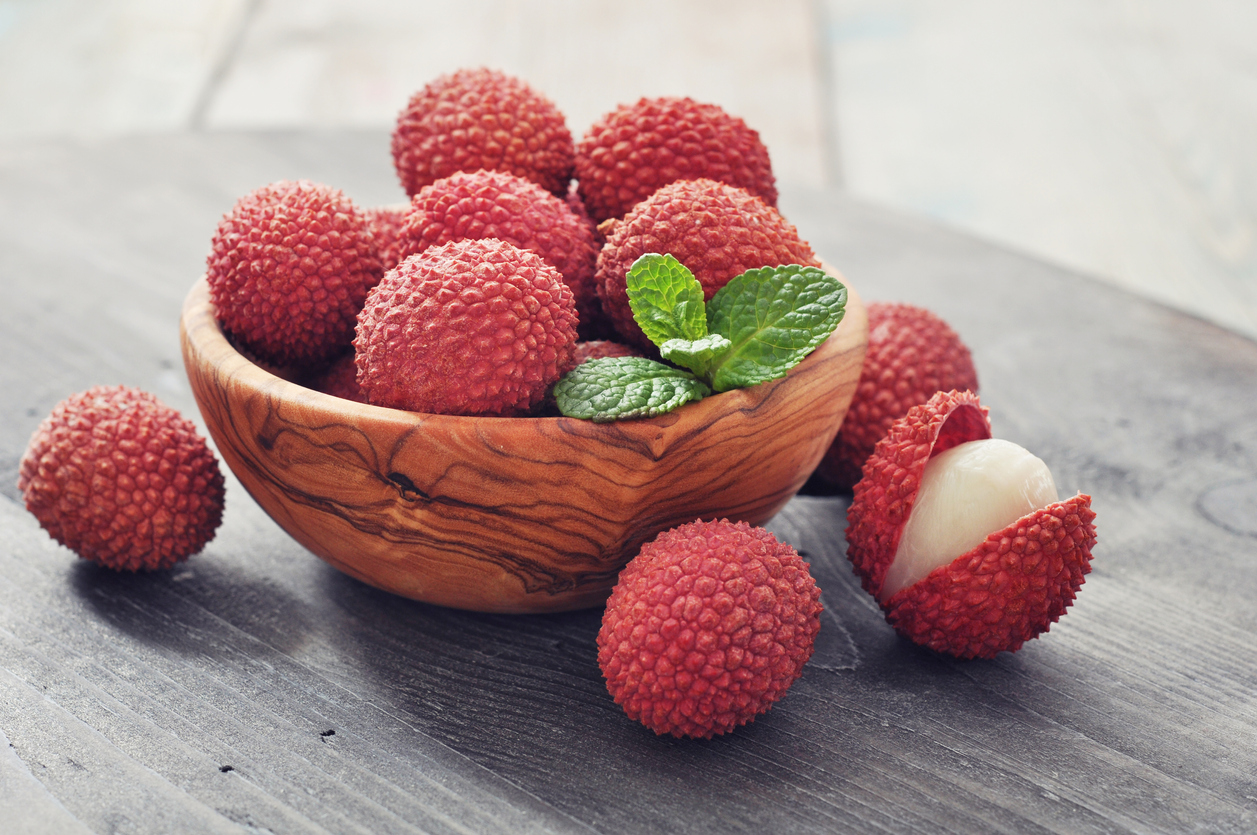
#5) Lychee
When you bite into a lychee, you may detect notes of berry, orange or watermelon. This fruit looks quite different from any of them, though. Native to Asia, lychees have bumpy outer skins and white interiors. The red skin should be discarded, but the flesh can be eaten raw.
Lychees are high in natural sugar, but they also offer health benefits like potassium, vitamin C and riboflavin. Like apples, this fruit also contains the flavonoid quercetin, which may have anti-inflammatory properties.
If you can’t find fresh lychees in your store, canned varieties are a good substitute. Note that there are health concerns related to eating large quantities of unripe lychees. But eaten in moderation on a nourished stomach, chances are that ripe lychees are fine for most people.
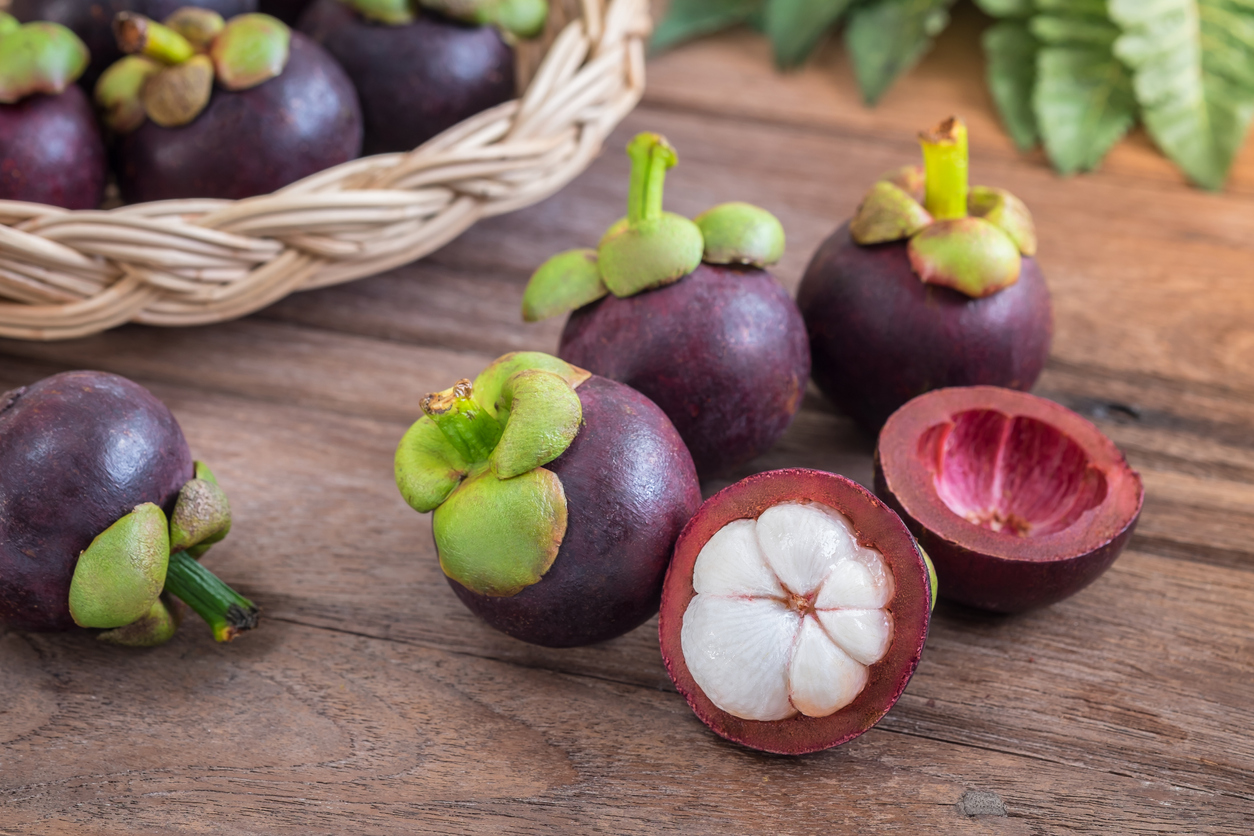
#6) Mangosteen
The soft inner fruit of a mangosteen is hidden within its soft purple shell. Native to Southeast Asia, mangosteens are hard to get a hold of in the U.S.
But if you do manage to score one, you can eat both the white flesh and the seeds. Some people suggest that the taste is reminiscent of pineapple or peaches.
Mangosteen is often hailed as a cancer-fighting supplement, but the research to support that claim is lacking. Studies do show, though, that mangosteen may reduce inflammation or act as an antimicrobial.
Plus, this fruit offers nutrients like vitamin B12, zinc and calcium. If you can’t find mangosteen, blackberries and apricots are other fruits that can boost your zinc and calcium intake.
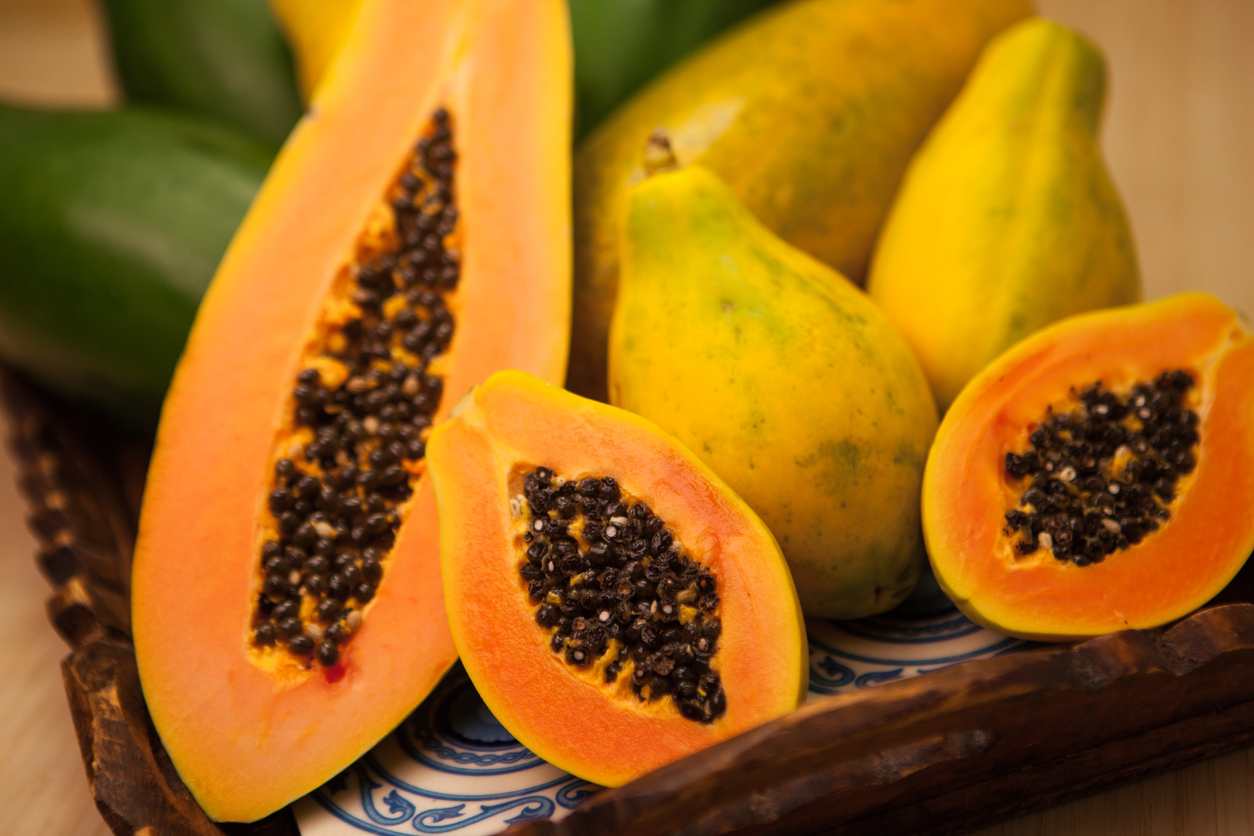
#7) Papaya
A tropical fruit with orange-pink flesh, ripe papaya can be cooked or eaten raw. The unripe version, known as green papaya, can also be used in cooked dishes.
Both the flesh and the seeds are edible, and the flesh is often featured in fruit salads, sauces and marinades.
Eating papaya is a good way to get vitamins A, C and E in your diet. This fruit will also provide fiber and folic acid. If you can’t get your hands on papaya, you might try mango instead. Although mango has more calories and a sweeter flavor, it’s another tropical fruit that contains vitamins A and C.
If you’re pregnant, steer clear of uncooked, unripe papaya, since the latex content in papaya could stimulate contractions.
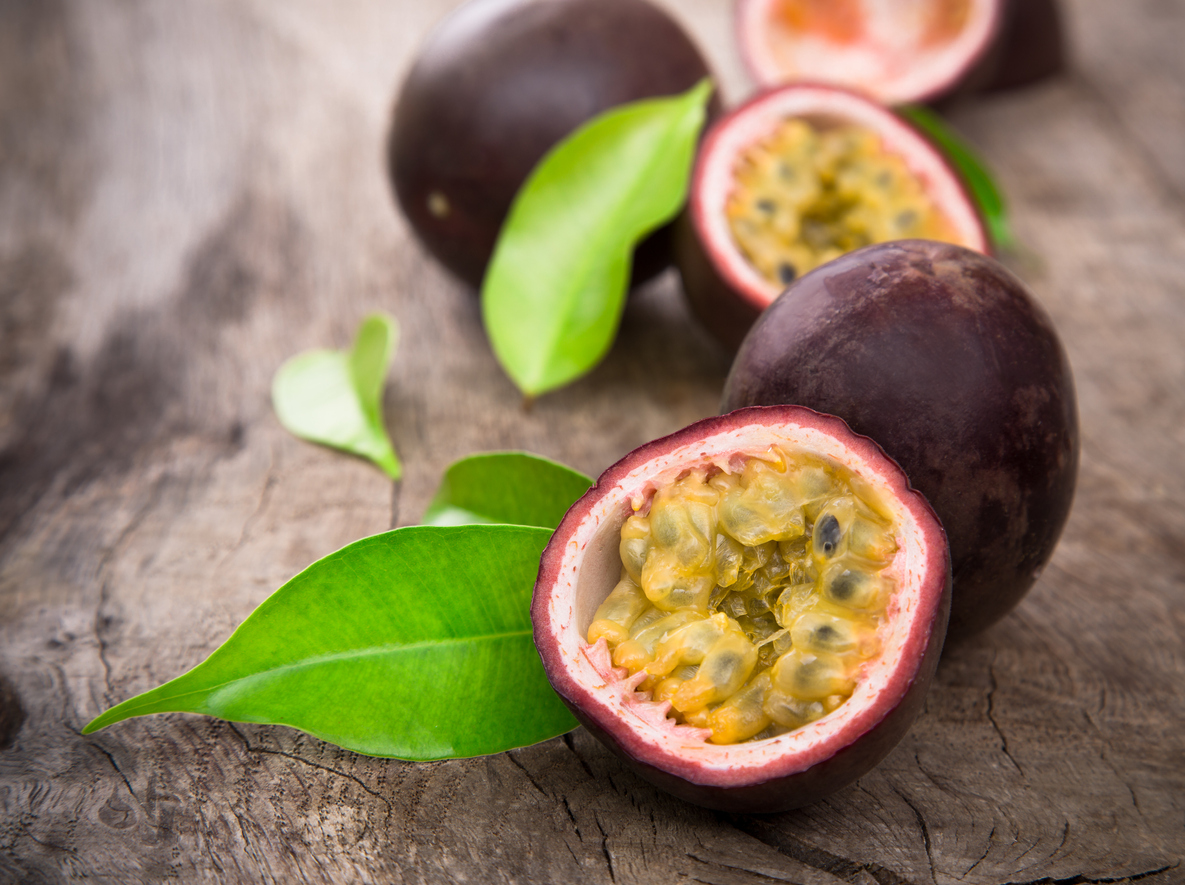
#8) Passion Fruit
Also known as lilikoi, yellow passion fruit is popular in Hawaii. This small, round fruit has thick outer skin. Slice through it to access the pulp and seeds, both of which are edible. You can scoop them out with a spoon to eat them raw or add them to juices or sauces.
Like the more common orange, lilikoi offers a good dose of vitamin C in every bite. You’ll also get vitamin A and magnesium from this fruit.
Plus, it’s a good source of fiber, which can help keep your digestive system running smoothly.
How to Get Your Hands on Exotic Fruits
Unusual fruits are harder to come by than grapes and pears. You probably won’t be able to pick up a jackfruit or a cherimoya at the corner grocer, so finding some of these fruits may take some digging.
Some may be available from larger supermarkets. Stores with an impressive produce section, for example, may carry papayas or dragon fruits. Others may be willing to get them for you if you ask the produce manager, or they may be seasonal items.
Try specialty grocery stores, too. Some natural food co-ops stock non-mainstream produce. Ethnic stores, such as Asian or Middle Eastern groceries, may have what you’re looking for as well.
If all else fails, consider ordering online. You may need to buy a full box, and shipping can cost a pretty penny. Still, it might be worth it for the excitement of trying something new. See if you have a few adventurous friends who might want to go in on a fruit delivery with you.
Whether you try one of these unusual fruits or seek out all eight, you’re sure to add new flavors and extra nutrients to your diet. You may even discover a new favorite fruit that you’ll want to enjoy again and again.







